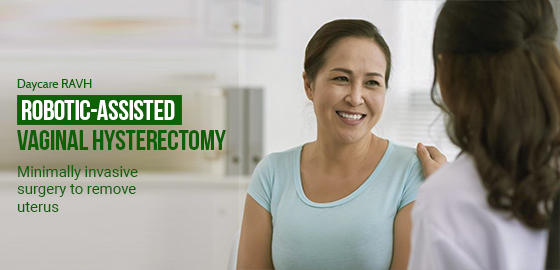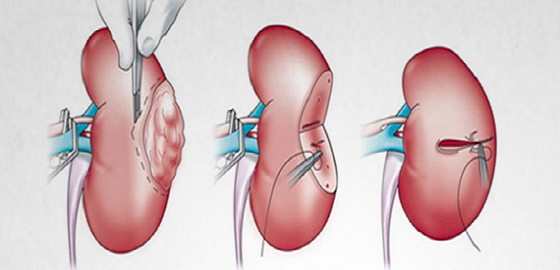

Hysterectomy is the surgical removal of the uterus. Hysterectomy can be performed for a variety of reasons and may also involve the removal of other organs and tissues, including ovaries and/or fallopian tubes. This surgery traditionally done via open surgical method involved a large incision in the abdomen and postoperative significant pain. With the advent of minimal access surgery, the surgery can be performed safely with minimal blood loss and early recovery. Robotics has added a new dimension to minimal access surgery by giving the surgeon a 3D
perception and magnification of the organs that help in precision surgery to add to the safety of the patient.
Hysterectomies may be performed to treat conditions such as:
Hysterectomy is one of the most common surgeries performed by gynaecologists and uro gynaecologists worldwide. Increasingly more and more surgeons across the world have started using the Da-Vinci robot for gynaecological surgeries.
The magnified, 3-dimensional view allows for incredible precision, flexibility and control. The surgeon passes the instruments through small abdominal incisions. The surgeon can control all these movements from a console that, in turn, provides a greater level of comfort for him/her. In addition, the articulating arms offer 7 degrees of movements for precise movements enabling the surgeon to make accurate &safe cuts. Last but not least, this method also drastically decreases the chances of the surgeon experiencing tiredness or fatigue at the end of the day thereby helping reduce the possibility of human error as well.
Patients undergoing a minimally invasive hysterectomy are also likely to experience lower levels of pain, experience decreased blood loss, lesser chances of contracting infections, less scarring as well as quicker recovery time. Patients can recover very quickly from all sorts of difficult/complex surgeries while being able to resume normal daily activities more quickly than one could after undergoing open surgery. All this is possible while also maintaining relatively good outcomes and low complication rates.
A robotic hysterectomy may be recommended even to severely obese patients where an open or laparoscopic hysterectomy would be difficult to perform.
All this is possible while also maintaining relatively good outcomes and low complication rates.
A robotic-assisted vaginal hysterectomy is performed under General anaesthesia. More often than not, the average operating time ranges between 1-3 hours. That said, operative time tends to differ from individual to individual.
In some cases, a urinary catheter might be inserted into the patient to empty his/her bladder. Thereon, approximately 3 to 5 small keyhole (< 1cm) incisions are made in the abdomen and slender surgical instruments are inserted through them. The instruments are then docked onto the robot. The surgeon remotely controls the robot with the aid of a console located a short distance away from the patient where the magnified operating field can be viewed in 3-D. With the help of this console, the surgeon will be able to control the surgical instruments in order to remove the uterus.
Depending on the patient's condition, the surgeon might also proceed to remove one or both ovaries as well as the fallopian tubes.